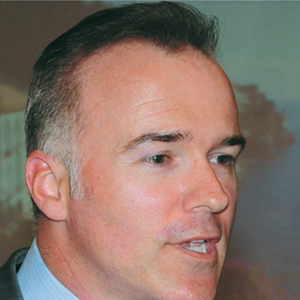
FRONT OF THE ROOM – Brian Lange
Training preparation often starts in your own mind
 The practical and necessary often consume our preparation for being in front of a roomful of people: pre-meeting communications with participants, organizing any guest speakers, ensuring room logistics and materials, designing content and structure, making catering decisions, etc. That’s not to mention honing our own familiarity with the material we’re going to present.
The practical and necessary often consume our preparation for being in front of a roomful of people: pre-meeting communications with participants, organizing any guest speakers, ensuring room logistics and materials, designing content and structure, making catering decisions, etc. That’s not to mention honing our own familiarity with the material we’re going to present.
However, I often find that one overlooked part of our general preparations can casually be referred to as “getting your head right.”
I confess to being a big picture kind of guy. I like to know how the pieces fit together, and why things are as they are. Also, I like to know where they’re going. So, I try to make some of my prep time about getting my head right.
Here are some things to consider assisting you in connecting the dots for your audiences — and linking organizational, learning and participant needs together —and preparing your own mindset.
Start With Why
With acknowledgement of that phrase to author Simon Sinek, you should absolutely know how the material you are about to present relates to what is happening in the organization and why it is important. Too often, we deliver material in a vacuum, and context suffers as a result.
Sure, you’re rolling out a new initiative, and “everyone has to go through it” — but why? How does it fit in the overall performance and execution of the company’s mission? How did we get here? What’s driving it? What do we hope to gain from it?
I am not suggesting that you open with answering all of these questions for the participants. This is about what you should know in your gut, so that it shapes how you choose to deliver your material.
We have to look beyond the leader’s guide and slide deck to see the big picture relevance – this is the potential of the impact and value you can bring to your audience!
Get Inside!
In typical public speaking classes, the notion of “know your audience” is often put forth: who they are, their roles, backgrounds, etc. However, this approach doesn’t delve deeply enough to truly connect with and engage the audience.
There is tremendous value in putting thought into getting inside the heads of your audience members. Put yourself in their shoes: What’s on their minds? How might they be feeling about being there? What might they be protective or defensive about (if anything)? What biases might they bring? What could the upside be of the material you’re presenting? How might they feel about you?
Affirm
Just as the character Stuart Smalley from the old Saturday Night Live sketches used to say, “I’m good enough; I’m smart enough; and, gosh darn it, people like me!” Positive affirmations can provide a valuable final boost to your performance.
I have reminded myself before some sessions simply that, “I know my material. I know why it’s relevant, and people are going to enjoy working with me.” Yes, it may sound a little (or a lot) hokey, but don’t knock it till you’ve tried it! Think of it as a final self-pep talk.
Conclusion
By investing a little time in aligning your intention with the specific audience and the context with which you’ll be working, you’ll have taken a big step toward getting your head right. And, your delivery can be even more impactful!
 Brian Lange is with Perim Consulting and serves as lead facilitator for LTEN PrimeTime! For Trainers Core and Masters Workshops. Email Brian at blange@perim.com.
Brian Lange is with Perim Consulting and serves as lead facilitator for LTEN PrimeTime! For Trainers Core and Masters Workshops. Email Brian at blange@perim.com.








